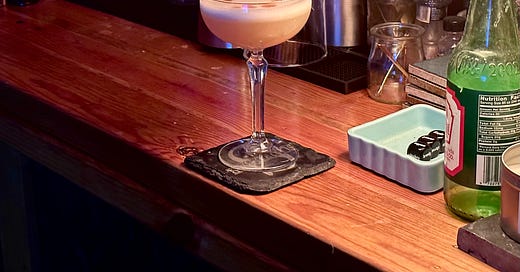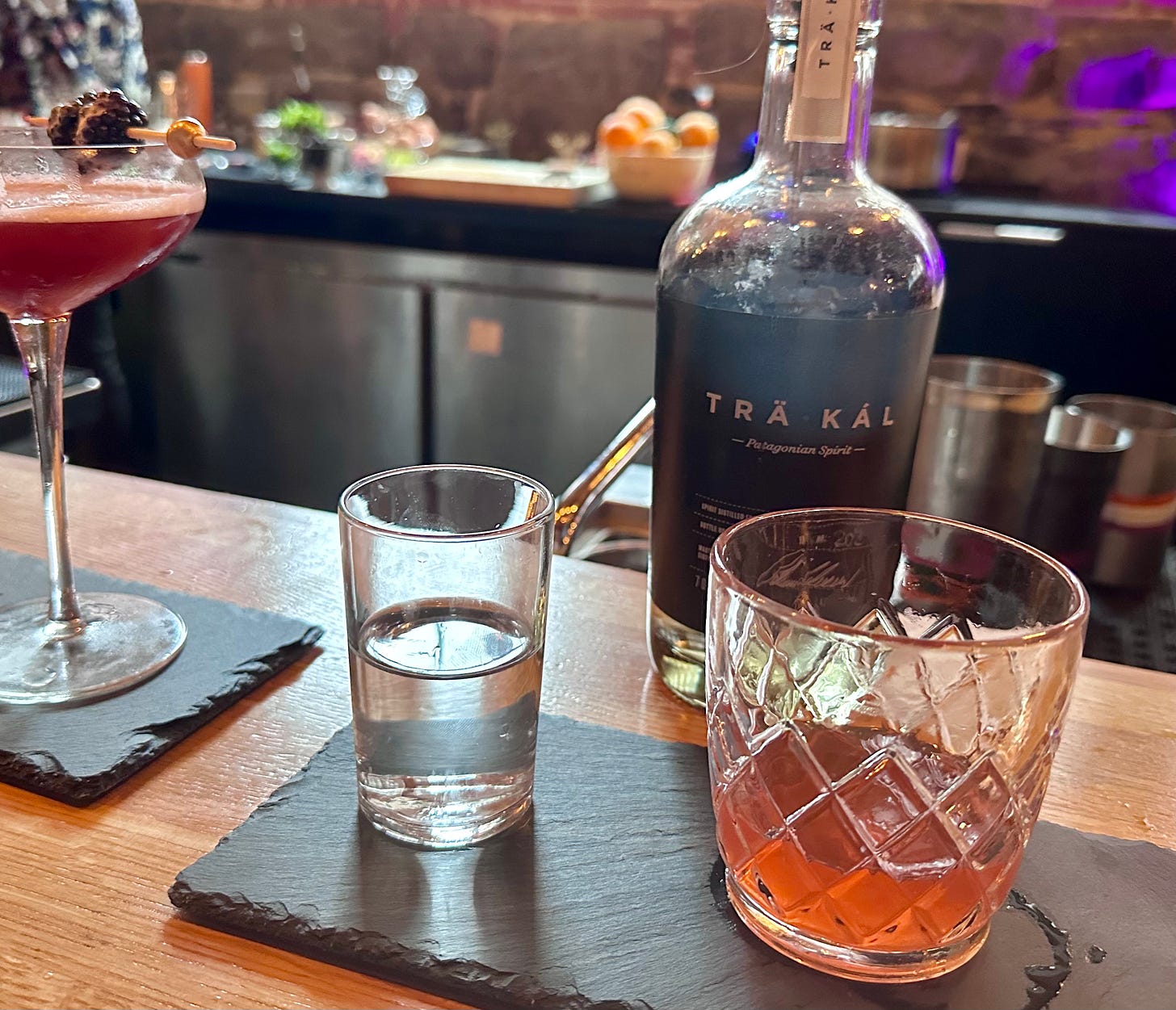Is This the Best Whiskey Sour I’ve Ever Had?
A fall-friendly variation that adds apple and spice and everything nice.
If there is a single piece of advice I have for cocktail enthusiasts and home bartenders, it’s this: Focus on mastering classics.
The core skill is not mixing a dozen unusual ingredients into the same concoction, which may or may not be interesting. It’s learning to make a superior Daiquiri or Old Fashioned or Manhattan or Margarita. It’s finding the best way (or ways) to make a familiar drink. That includes picking and preparing the right ingredients. And it includes honing the technique with which you produce the drink — shaking, stirring, chilling, diluting, frothing, and so forth.
Once you can successfully produce a small handful of classics, then you can begin to branch out with simple variations — adding a novel flavoring, splitting the base ingredient into multiple components, or otherwise adding complexity within the confines of the original.
Cocktails are art. But they are also engineering, with a handful of standard forms and structures that form the basis of the craft. The first table a novice carpenter constructs will probably be pretty rudimentary. But those rudimentary constructions form the foundation of the work, no matter how elaborate it goes on to become. The same goes for cocktails.
And thus, in recent years, when I have found myself lucky enough to sit across from a bartender who seems to really, really know his or her stuff and be able to execute at a high level, and who is also amenable to requests, what I ask for is this: Make me a drink I might have had or heard of that you make better than anyone else.
The most annoying thing about this request, from a bartender’s perspective, is that no bartender is going to know which drinks you’ve had before, or what you’ve heard of. So I try to explain that I’m just looking for a drink that has traveled — something that appears on cocktail menus with some frequency, something that has been served in bars all over. I say they can assume I’ve tried…a lot of drinks.
I’m not necessarily looking for super-elaborate novelty. I’m looking for a superior version of a drink I already know — something where I have a reference point, a baseline for comparison, so I can see what this particular bartender is adding to the equation.
This won’t work at every cocktail bar, even some very high-end places that specialize in predetermined cocktail programs (basically, fussed-over menu drinks).
I typically only make this request after having tried a drink or two and established something like a rapport with the bartender. I always acknowledge that it might seem like an odd ask. (For those who want to try this themselves: If you make this request and the bartender doesn’t seem game, don’t push it. Be polite and accommodating.) But ultimately, it’s an ask for the bartender to show off. And bartenders who appreciate the classics tend to enjoy making this sort of drink.
As it so happens, I encountered just such a bartender this summer on a visit to Drink, the legendary basement cocktail bar in Boston’s Fort Point neighborhood.
More than anything else, Drink is a showcase for bartenders. Every seat is a bar seat, and there’s no menu, no list of newfangled fancy concoctions or house standards to pick from. You just describe what you like to the barkeep, and then he or she decides what to make you based on his or her repertoire and what ingredients have been prepared for the evening.
This extreme deference to individual bartenders makes the experience somewhat variable. But at its best, Drink doesn’t just showcase great cocktails; it demonstrates the value of thoughtful bartending, which includes customer interactions.
Also, if you look very closely at the backbar area, you can see this amazing, totally correct note on the fridge:
On my most recent visit, I hit the bartender jackpot: A guy who was friendly, even garrulous, who was very obviously game to talk about cocktails and theory, about his own interest in drinks developed. And the drinks he made were phenomenal. My first was a Sazerac variation with Träkál, a foreign brandy I’d never tasted before. Another was a warming riff on Black Manhattan.
So eventually I asked for a superior version of something familiar. What well-known cocktail do you make better than anyone else?
What I got was billed as a Whiskey Sour. And it was — but it was also so much more.
This was a spicy, fruity, tangy, fluffy, eggy, expertly elevated riff on a Whiskey Sour that employed unexpected but not obscure elements like John D. Taylor’s Velvet Falernum and apple brandy, giving it a seasonally appropriate apple-spice character.
It was perfectly balanced, rich without being overpowering, and unusually layered with flavor. I am a huge fan of Dan Sabo’s Whiskey Sour recipe, which swaps a bit of orange juice into the sugar section. But this might have been the best Whiskey Sour I’ve ever had. Certainly, it’s the best Whiskey Sour I’ve ever been served in a bar.
And while I did not obtain a precise recipe, I got a clear enough description of the spec that I later managed to come pretty close to replicating it at home. And it’s just as delicious at my home bar.
So this week we’re going to continue with the Whiskey Sour Season theme by making this delightful Whiskey Sour and breaking down how it works, showing it how takes the basic structure of an ordinary three-ingredient Whiskey Sour and adds depth, complexity, and interest without fundamentally departing from the original idea.
The Building Blocks of the Whiskey Sour
Usually, we start by looking at the elements of a cocktail and then get to the recipe at the end. But this week, we’re going to invert the structure of the newsletter. (This works in cocktails too: See, for example, the Reverse Manhattan.) Instead of looking at the relevant elements and techniques first, and then getting to the recipe, we’re going to start with the recipe — then unpack the elements and show how it works.
So here’s the recipe as I’ve been making it:





